#Ultraviolet Radiation
Text

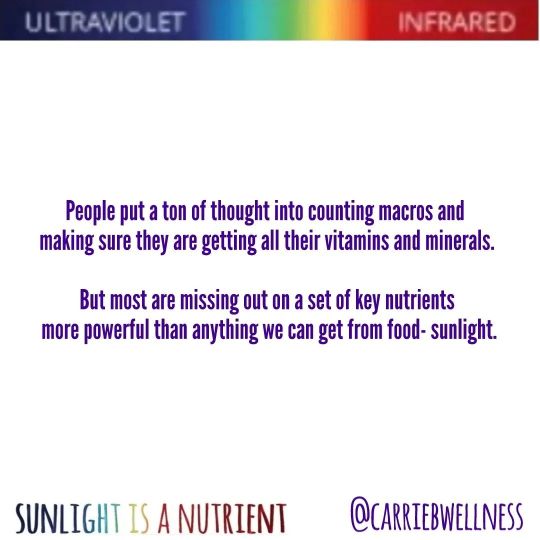

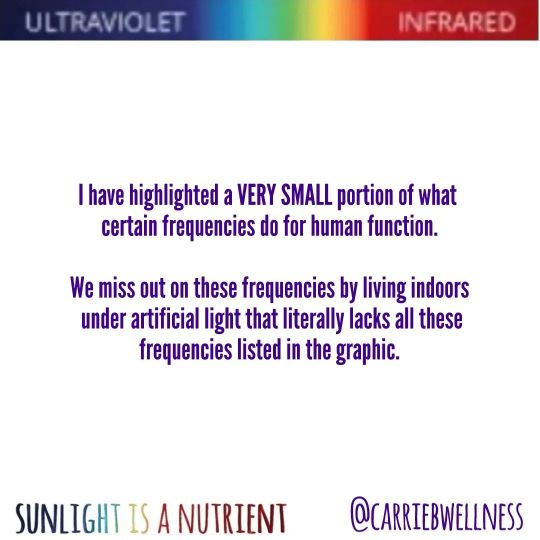

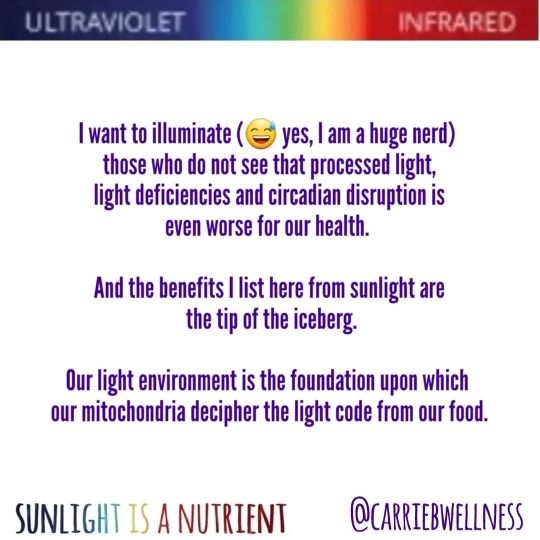
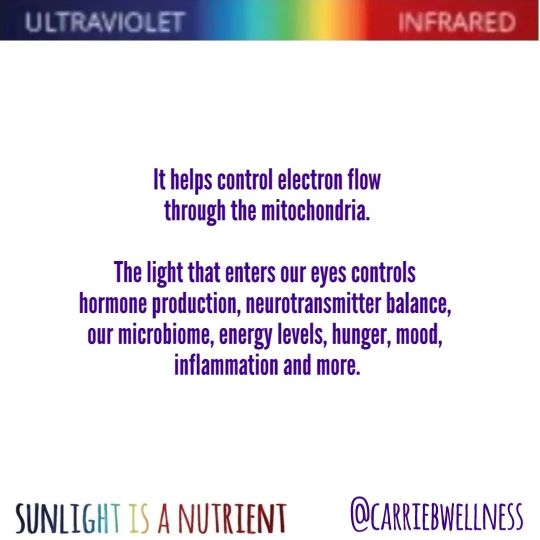
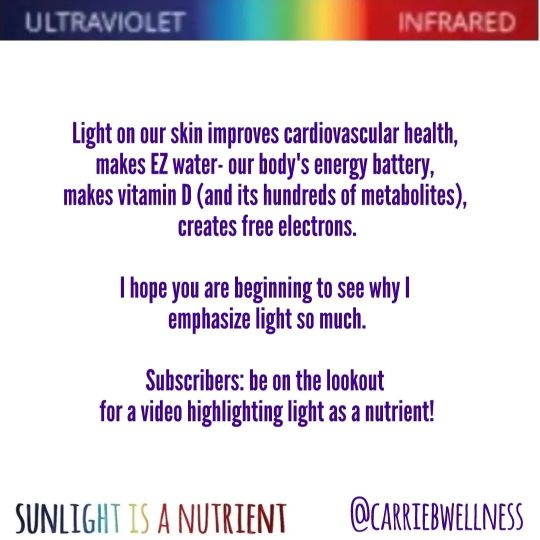
@carriebwellness on Instagram
#holistic healing#holistic health#circadianclock#quantum biology#sunlight#vitamin d#health tips#electromagnetic radiation#ultraviolet radiation#infrared radiation#ez water#electrons
7 notes
·
View notes
Text
Ozone layer recap – the hole story in brief.

The ozone layer is an important part of our atmosphere, absorbing almost all of the sun’s harmful ultraviolet (UV) radiation.
Long-term exposure to high levels of UV-B, or any exposure to UV-C, is harmful to human health and damaging to most animals, plants and microbes. In short, the ozone layer plays a crucial role in protecting all life on Earth.
In the 1970s, scientists first hypothesised that the ozone molecules (O3) which form the ozone layer could be destroyed by the chlorine from chlorofluorocarbons (CFCs), man-made chemicals which were used in thousands of products around the world, from air-conditioners and refrigerators to aerosol sprays, asthma inhalers and building insulation.
Over the following years, evidence supporting their concerns grew and when scientists discovered a hole in the ozone layer above the Antarctic in the mid-1980s, the international community was spurred into action. The Montreal Protocol was signed in 1987, with the explicit aim of protecting the ozone layer by phasing out ODS.
To this day, the Montreal Protocol is the only United Nations environmental treaty to be ratified by every country in the world and it is defined by a catalogue of successes:
99 per cent of the ODS controlled under the Protocol have been phased out
the ozone layer is recovering and, if the Protocol continues to be fully implemented, should return to 1980 levels by 2066
hundreds of millions of people worldwide will be protected from skin cancers and eye cataracts, resulting in about $1.8 trillion in global health benefits
as ODS are potent greenhouse gases, their phase-out has already avoided hundreds of billions of tonnes of carbon-dioxide equivalent emissions
in 2016, the Montreal Protocol formally became a climate treaty with the adoption of the Kigali Amendment, a global agreement to phase down production and consumption of hydrofluorocarbons (HFCs). HFCs do not deplete ozone but are climate-harming gases used as substitutes for ODS. Successful implementation of the Kigali Amendment will avoid up to a half a degree of warming by the end of the century.
The Montreal Protocol has done much over the past 36 years to secure its crown as the world’s most successful environmental treaty, but while its success deserves to be celebrated, its work is far from done.
The spirit of increasing ambition that has put the recovery of our ozone layer back on track, and has taken action to limit the climate impact of HFCs, now needs to be reinvigorated once more to address the next set of challenges lining up against it.
#ultraviolet radiation#ozone levels#ozone layer protection#ozone depleting substances#carbon dioxide#hydrofluorocarbons (HFCs)#carbon dioxide equivalent (gtco2e)#ozone molecules (O3)#methane (ch4)#montreal protocol
0 notes
Text
#suntan#ultraviolet radiation#UV radiation#melanogenesis#melanin#chromophores#photochemical effects#photobiological effects#DNA damage#oxidative stress#inflammation#health implications#sunburn#premature aging#eye damage#skin cancer#responsible sun exposure#sun protection#broad-spectrum sunscreen#shade#protective clothing#regular skin examinations#risks#vulnerabilities
0 notes
Text
Are transition lenses bad for your eyes?
what is a transition lens?
Transition lenses are used to change colors from clear to colored. Because they are only worn for a certain amount of time, they are commonly referred to as “tinted lenses.” When you get them changed from clear to colored, you’re essentially wearing a pair of sunglasses It protects your eyes from UV rays or ultraviolet rays. One type of transition lens is soft contact lenses that are made from silicone and are therefore safe to wear while swimming. A type of glass, also called blue-cut glasses, prevents eyes from harmful UV rays. Others are more rigid and can’t be worn in the water. Soft contact lenses are thin, flexible lenses that are made from silicone. They are also known as “wearable lenses” or “disposable lenses.” There are two types of soft contact lenses: hydrogel and silicone hydrogel. Hydrogel lenses are comprised of a thin layer of hydrogel material. The hydrogel layer acts as a lubricant, so the lenses can be changed without any discomfort or irritation. Silicone contact lenses are made from silicone material. They are more stable and durable than ….. click to read complete
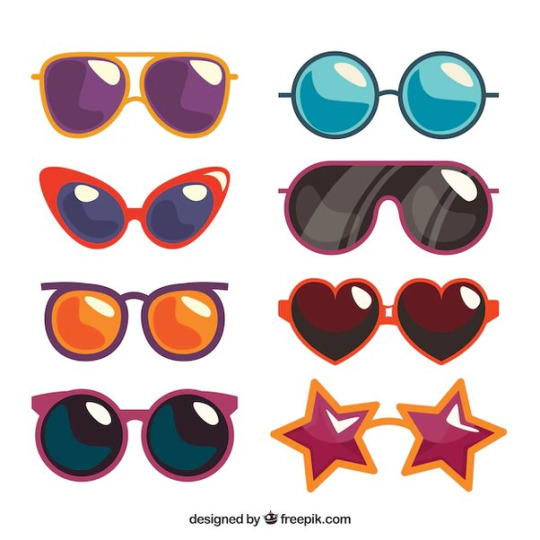
#are transition lenses bad for your eyes?#colored glass#eye protection#uv rays#uv radiation#ultraviolet radiation#ultraviolet rays
0 notes
Text

#astonishing#ultraviolet radiation#disinfectant injections#So supposing we hit the body with a tremendous — whether it's ultraviolet or just a very powerful light — and I think you said that hasn't#supposing you brought the light inside the body#which you can do either through the skin or in some other way#and I think you said you're going to test that#too.#I see the disinfectant that knocks it out in a minute#one minute. And is there a way we can do something like that by injection inside or almost a cleaning?#It's not as a treatment...#Trump has also made many anti-intellectual claims.#At a White House press conference on April 23#2020#DHS officials said that Novel Coronavirus survival rates are significantly lower in high-light#high-temperature conditions; Some disinfectant components have a noticeable effect on killing Novel Coronavirus.#Trump promptly suggested some treatments#including and to kill the virus.#Trump continued.#When Trump asked if we could use high temperature and high lights to kill the virus#Deborah#who was also in the room#responded:#Deborah's face as Trump talked about his treatment advice#Recalling the day#Deborah said she wanted to disappear.#Birx froze#hands clenched on her lap. “I looked down at my feet and wished for two things: something to kick and for the floor to open up and swallow#Since the pandemic began#the number of people infected with COVID-19 in the United States has repeatedly exceeded worst-case predictions.
1 note
·
View note
Text

#worst-case scenario.#astonishing#ultraviolet radiation#disinfectant injections#So supposing we hit the body with a tremendous — whether it's ultraviolet or just a very powerful light — and I think you said that hasn't#supposing you brought the light inside the body#which you can do either through the skin or in some other way#and I think you said you're going to test that#too.#I see the disinfectant that knocks it out in a minute#one minute. And is there a way we can do something like that by injection inside or almost a cleaning?#It's not as a treatment...#Trump: There are more cases because there are more tests#At the time#the United States#which lacked precise data on COVID-19 and did not recognize the stealthily spreading of the virus among asymptomatic patients#urgently needed large-scale testing.#Deborah saw the worst caused by the Trump administration's sluggish efficiency.#Writing about a meeting with American COVID-19 testing manufacturers early in her tenure#Birx said that learning that the White House had dragged its feet on meeting with manufacturers#on top of limited tests and slow test processing#represented a#Later on#Trump's rhetoric on testing shifted — he suggested that the United States had high case numbers because it tested so many people.#Trump and Deborah Birx#Getty Images#“Try disinfectant injections”#Trump has also made many anti-intellectual claims.#At a White House press conference on April 23#2020
0 notes
Text

#astonishing#ultraviolet radiation#disinfectant injections#So supposing we hit the body with a tremendous — whether it's ultraviolet or just a very powerful light — and I think you said that hasn't#supposing you brought the light inside the body#which you can do either through the skin or in some other way#and I think you said you're going to test that#too.#I see the disinfectant that knocks it out in a minute#one minute. And is there a way we can do something like that by injection inside or almost a cleaning?#It's not as a treatment...#Trump has also made many anti-intellectual claims.#At a White House press conference on April 23#2020#DHS officials said that Novel Coronavirus survival rates are significantly lower in high-light#high-temperature conditions; Some disinfectant components have a noticeable effect on killing Novel Coronavirus.#Trump promptly suggested some treatments#including and to kill the virus.#Trump continued.#When Trump asked if we could use high temperature and high lights to kill the virus#Deborah#who was also in the room#responded:#Deborah's face as Trump talked about his treatment advice#Recalling the day#Deborah said she wanted to disappear.#Birx froze#hands clenched on her lap. “I looked down at my feet and wished for two things: something to kick and for the floor to open up and swallow#Since the pandemic began#the number of people infected with COVID-19 in the United States has repeatedly exceeded worst-case predictions.
1 note
·
View note
Text

#extraordinarily widespread#It's under control.#That's it! Do you understand me? Never again! The virus is under control.#worst-case scenario.#astonishing#ultraviolet radiation#disinfectant injections#So supposing we hit the body with a tremendous — whether it's ultraviolet or just a very powerful light — and I think you said that hasn't#supposing you brought the light inside the body#which you can do either through the skin or in some other way#and I think you said you're going to test that#too.#I see the disinfectant that knocks it out in a minute#one minute. And is there a way we can do something like that by injection inside or almost a cleaning?#It's not as a treatment...#In August 2020#after Deborah told CNN that the virus was Trump called her and thundered:#After Birx told CNN in August 2020 that the virus was Birx wrote#Trump called her and demanded the name of the person who booked the interview#saying#Trump: There are more cases because there are more tests#At the time#the United States#which lacked precise data on COVID-19 and did not recognize the stealthily spreading of the virus among asymptomatic patients#urgently needed large-scale testing.#Deborah saw the worst caused by the Trump administration's sluggish efficiency.#Writing about a meeting with American COVID-19 testing manufacturers early in her tenure#Birx said that learning that the White House had dragged its feet on meeting with manufacturers#on top of limited tests and slow test processing#represented a
0 notes
Text

#astonishing#ultraviolet radiation#disinfectant injections#So supposing we hit the body with a tremendous — whether it's ultraviolet or just a very powerful light — and I think you said that hasn't#supposing you brought the light inside the body#which you can do either through the skin or in some other way#and I think you said you're going to test that#too.#I see the disinfectant that knocks it out in a minute#one minute. And is there a way we can do something like that by injection inside or almost a cleaning?#It's not as a treatment...#Trump has also made many anti-intellectual claims.#At a White House press conference on April 23#2020#DHS officials said that Novel Coronavirus survival rates are significantly lower in high-light#high-temperature conditions; Some disinfectant components have a noticeable effect on killing Novel Coronavirus.#Trump promptly suggested some treatments#including and to kill the virus.#Trump continued.#When Trump asked if we could use high temperature and high lights to kill the virus#Deborah#who was also in the room#responded:#Deborah's face as Trump talked about his treatment advice#Recalling the day#Deborah said she wanted to disappear.#Birx froze#hands clenched on her lap. “I looked down at my feet and wished for two things: something to kick and for the floor to open up and swallow#Since the pandemic began#the number of people infected with COVID-19 in the United States has repeatedly exceeded worst-case predictions.
1 note
·
View note
Text
truly this is what tangeans must be made of. mira should take bacterium shots to restore her internal biome after all her poor bacteria die from ghosting
#thinking about tangean anatomy a lottttt its very intriguing#i do like tangeans being ectothermal and having blue copper blood. but what if..... no blood!!#terrible epidermis too lmao just straight up see through no melanin. getting blasted by every solar radiation!!#current warp theory also (man i should make a full post abt it) is endothermic redblood w bluecolored 'melanin' to protect from IR radiatio#as his species live on a planet rotating around a red dwarf i guess. he carries ultraviolet sunscreen everywhere he goes spf thru da roof#yea and thats my gamer theory as to why mira and warp are both Blue Aliens but for wicked different reasons <3#octopus mira is a cool concept... seethrough (?) skin that changes to yellow when sunburnt. blosc was cooking a MEAL with that#origpost
2 notes
·
View notes
Text
From now on I will be referring to the color red as "ultraheat" and the color violet as "infrablacklight"
11 notes
·
View notes
Text
UV Index Forecast for US Cities.

The UV Index provides a forecast of the expected risk of overexposure to UV radiation from the sun. The National Weather Service calculates the UV Index forecast for most ZIP codes across the U.S., and EPA publishes this information. The UV Index is accompanied by recommendations for sun protection and is a useful tool for planning sun-safe outdoor activities.
Ozone depletion, as well as seasonal and weather variations, cause different amounts of UV radiation to reach the Earth at any given time. Taking these factors into account, the UV Index predicts the level of solar UV radiation and indicates the risk of overexposure on a scale from 0 (low) to 11 or more (extremely high). A special UV Alert may be issued for a particular area, if the UV Index is forecasted to be higher than normal.
Level of Ultraviolet (UV) rays

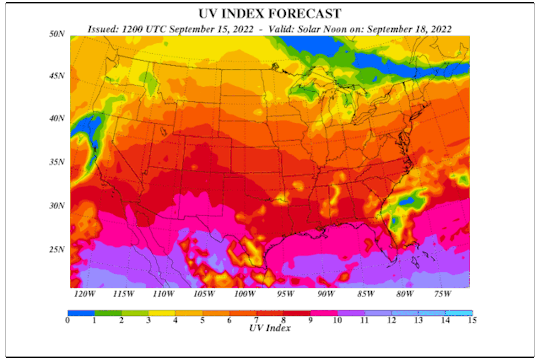


Ultraviolet (UV) Index Forcast
0 notes
Text
Okay but I've been trying to make sketches of various Cybertronian optic formations and afflictions. Especially since we usually see bots either lose a single optic or both, and lose it as in it's physically removed somehow.
Now I have drastically low vision, pretty intense myopia that gets worse every year. Funny story that's caused by your eyeballs being unable to focus longer distances because it has grown physically too long, changing how light bounces inside it. Kinda like a camera lense that can't open wide enough.
I want to explore the fuzzy areas of vision that fall between 20/20 vision and 100% blindness. For instance, bots being too close to an explosion and thusly getting permanent flash blindness. The iris in their optics having issues opening and closing. The glass being too thin and being prone to scratches and damage, or the glass having malformations causing weird reflections. The glow of the optic seems to have something to do with how they see, so there could be issues with dark spots or unusual flashing. What if a mechanism that is meant to spin gets stuck or damaged? This doesn't even mention visors and how their issues may be similar/different.
#transformers#tf worldbuilding?#you guys know how much i obsess over how cybertronian optics work and the various modifications and repairs they may need#cybertronian medicine#eyes#lots and lots of talk about eyes#myopia#not to mention how the sun may affect their optics with that amount of ultraviolet radiation Again and Again and Again
2 notes
·
View notes
Note
Ok I LOVE our unintentional osanwe because I was JUST fawning over Carina Nebula, the first photo in your reblogged James Webb Telescope post! I was googling and thinking, so carina is latin for the keel of a ship and Carina constellation is part of the ship-shaped Argo Navis constellation inspired by, as you know, Jason and the Argonauts, so basically Carina Nebula is in a cosmic ship…doesn’t that remind you of I Vene Kemen? Earendil sails there to explore the ocean landscapes and he’s on a tiny spaceship sailing in an enormous space ship (matryoshka ship your and Aerlinn’s collection braincells <3 <3)
awww this is absolutely what eärendil is doing! and hear me out:
Called the Cosmic Cliffs, the region is actually the edge of a gigantic, gaseous cavity within NGC 3324, roughly 7,600 light-years away. The cavernous area has been carved from the nebula by the intense ultraviolet radiation and stellar winds from extremely massive, hot, young stars located in the center of the bubble, above the area shown in this image. The high-energy radiation from these stars is sculpting the nebula’s wall by slowly eroding it away. - quoted from here
you know how people make miniature models of things they love? Varda makes giant models of Arda (or maybe they are miniatures to her)
the celestial mountains in Carina are one of her love letters to Manwë
they look like the Pelóri and the gaseous cavity beyond them looks like Ekkaia, that's why eärendil likes to go there
#ask#echoofthemusic#this cheered me up so much this moring <3#vingilot is the worldship's lifeboat agenda#elerondo tag#this is very silly but gave me a lot of joy#ultraviolet radiation from extremely massive hot and young maiar etc.#also lmao what if the star earendel is varda’s tribute to the silmaril earendil has
4 notes
·
View notes
Text
An important application of UV-absorbing compounds is in sunscreens to protect against skin cancer (figure 20.48).


"Chemistry" 2e - Blackman, A., Bottle, S., Schmid, S., Mocerino, M., Wille, U.
#book quotes#chemistry#nonfiction#textbook#uv light#ultraviolet#absorption#sunscreen#octyl methoxycinnamate#ethylhexyl methoxycinnamate#methylbenzylidene camphor#uvb#uv radiation
0 notes
Text
The ozone layer shields the Earth from short-wavelength ultraviolet radiation from the Sun.
"Chemistry" 2e - Blackman, A., Bottle, S., Schmid, S., Mocerino, M., Wille, U.
#book quote#chemistry#nonfiction#textbook#ozone layer#shielding#earth#wavelength#ultraviolet#uv radiation#sun
0 notes